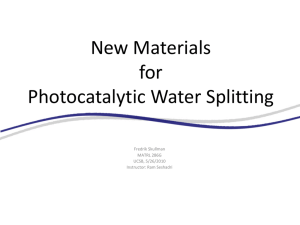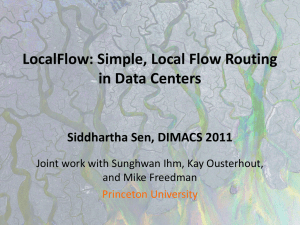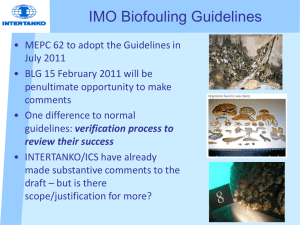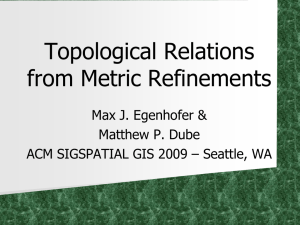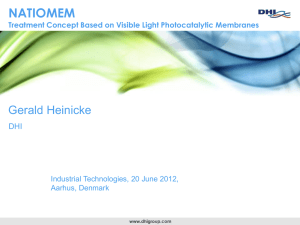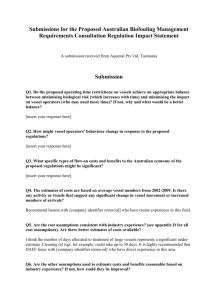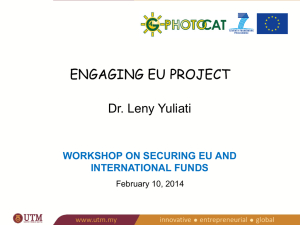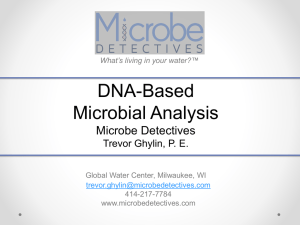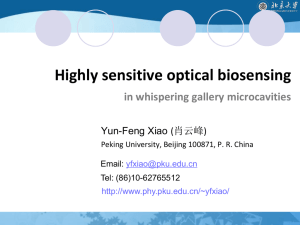Final Presentation - Harlem Children Society
advertisement
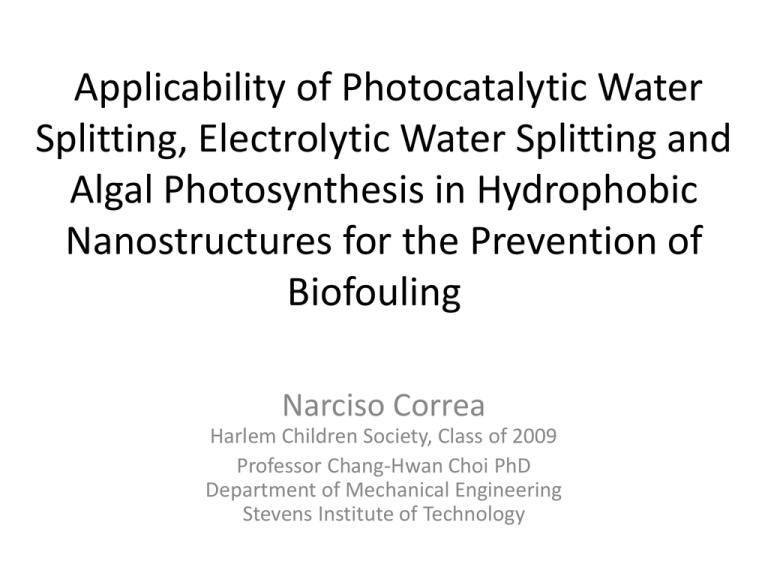
Applicability of Photocatalytic Water Splitting, Electrolytic Water Splitting and Algal Photosynthesis in Hydrophobic Nanostructures for the Prevention of Biofouling Narciso Correa Harlem Children Society, Class of 2009 Professor Chang-Hwan Choi PhD Department of Mechanical Engineering Stevens Institute of Technology Problem: Biofouling • What is Biofouling? – Biofouling is the “Gradual accumulation of water borne organisms [such] as bacteria and protozoa on the surfaces of engineer[ed] structures in water” • Economical Implications – Biofouling in moving vessels decreases maneuverability and increases drag. This thus causes a ship’s fuel consumption to increase up to 30% and as fuel costs account for 50% of the cost of running ships, the economic implications are tremendous • Ecological Implications – Biofouling on moving vessels facilitate the introduction of unknown species into new environments, causing an imbalance in the natural order. Biofouling on Ships -Biofouling starts off by the development of a biofilm coating on a surface -Biofilm is a film made of bacteria or other microorganisms -Biofilm develops depending on pH, surface material, nutrients available, etc. -Biofilm layer “provides a foundation for the growth of seaweed, barnacles, and other organisms” -Biofilm forms slime to which larger organism attach. Img: http://drillingcontractor.org/dcpi/2009/julyaug/ahead/biofouling4.jpg Possible Solution • Hydrophobic Nanostructures – In the form of teeth or pores on a surface – In between the teeth and in the pores are pockets of air – Air deflect and prevent the seeping in and pooling of water – preventing biofilm formation and thus Biofouling. • Possible mechanisms for air production – Photocatalytic Water Splitting, – Electrolytic Water Splitting – Algae Photocatalytic Water Splitting Photocatalysis works by using the photons emitted by the sun as an energy source in the splitting of water into Hydrogen and Oxygen. hV- photons/light energy VB- valence band CB- conduction band Distance between CB and VB is the Band Gap Img: Jos Oudenhoven, Freek Scheijen, Martin Wolffs, “Fundamentals of Water Splitting by Visible Light” Shown is an image of a photocatalyst in the process of splitting water. Photocatalytic Water Splitting • Photons in sunlight cause electrons to jump of the lattice of the photocatalytic material freeing an electron. • This process forms an electron hole while freeing an electron. • This freed negatively charged electron causes a reduction reaction of water to form Hydrogen. • The electron hole having a positive charge causes an oxidation reaction of water, forming Oxygen. Electrolytic Water Splitting •Use of an electric current in the splitting of water. •Redox reaction that uses energy input and would produce dissociation in water •As the energy sourcegives charge to the electrodes, the cathode becoming positively charged and the anode becoming negatively charged •The water with in the electrolytic solution would begin to dissociate as hydrogen is attracted to the cathode and oxygen to the anode. http://www.blewbury.co.uk/energy/images/electr olysis.gif Algal Photosynthesis Relative absorption in relation to Pigment type http://scitec.uwichill.edu.bb/bcs/cours es/Biology/BL05B/2_autotrophic%20n utrition.htm • Algae produce oxygen through the process of photosynthesis. • Photosynthesis occurs with the use of pigments which function as light absorbers. • Oxygen results as a byproduct of this process. • 6CO2 + 6H2O + Energy (sunlight) -> C6H12O6 + 6O2 Conclusion Pros Cons • Photocatalytic Water Splitting • Photocatalytic Water Splitting – No outside input of energy – Long lifespan • Electrolytic Water Splitting – Relatively high efficiency – Consistant production • Algal Photosynthesis – Renewable – Thousands of variability – UV light requirement limit its usability – Low efficiency – Effects of drag on Photocatalytic particles • Electrolytic Water Splitting – Untold environmental damage – Need for outside input of energy • Algal Photosynthesis – Visible light needed decrease with depth, but compensated by variability
